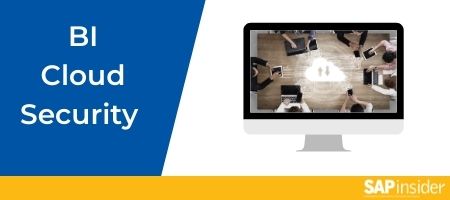Building a True Data Monetization Strategy
How a Data Governance Platform Provides the Right Foundation for SAP HANA
SAP users have experienced dramatic technological changes in recent years, especially in terms of data. Their organizations are increasingly engaging in a variety of activities that involve growing volumes of data from a wide variety of sources, including mergers and acquisitions, internal restructuring, moving from on-premise to cloud or hybrid IT landscapes, maintaining massive data lakes, and implementing innovative analytics paradigms. These activities can present a host of challenges, but for the data-savvy organization, they can also offer new opportunities for monetization.
Monetization is, after all, the end goal for all data use — organizations must find a way to leverage data to either reduce costs or gain new revenue. Like any other asset, there must be a strategy to support the monetization of data. To be successful in the data-driven economy, your data monetization strategy must be scalable, flexible, and timely. It must be capable of synthesizing internal and external data to derive unique insights and drive innovation. It should also span multiple areas within the business, connecting different products or services for added value. Above all, data must be properly analyzed and delivered in an easy-to-consume manner.
To effectively monetize data, organizations need to develop a comprehensive strategy and a data governance platform that supports it. With SAP HANA — which can rapidly process millions of bytes of data in real time — at the center of this strategy and model, organizations can take advantage of these new monetization opportunities sooner than they might have thought.
Why You Need to Rethink Data Governance for Monetization
In air navigation, pilots follow a rule of thumb that if they have traveled 60 miles, then an error in track of one mile results in an approximate one-degree error in heading. Said another way, one small error could land you in a field. The same is true of data: Bad data can be noisy, untrustworthy, and heterogeneous, making it difficult to find and reuse. This then affects your ability to create clear data models that are reliable and can be monetized. A single error in one data element could have an enormous impact downstream on the quality — and thus the success — of your analysis.
With a governance solution and strategy to baseline experimental data and connect it to business outcomes, you can begin to establish a reliable flight plan that gives you information when you need to correct your course. Companies that do not have a big data flight plan will struggle to take advantage of predictive analytics and will not be able to truly monetize their data. Their mistakes will repeat and the downstream results will never be tracked back to the data and the business.
One of the fundamental success factors for data monetization is to leverage a data governance platform that enables you to effectively use data. Discovering, contextualizing, and measuring data sources are key to effective data use. You also need the ability to create contextual intelligence and apply knowledge of the data’s structure and content to gain a better understanding of it and, hence, better alignment with a monetization strategy.
When well thought out, a data governance platform should offer strategic advantage to the business. A good data governance platform should enable you to:
- Discover critical data through a combination of automated discovery, expert engagement, disciplined curation, and a common narrative for digital transformation.
- Link performance management and data management through a proven metamodel for impact on data sets with operational, compliance, and analytical outcomes for the business.
- Unify data policies across analytical and transactional systems. Companies can create a business-facing data dictionary for reference and management across both business processes and analytics.
Data monetization is about more than just the bottom line. It’s about improving internal business processes and decision making to glean better insights that enhance products and services for your customers. And with a proper data governance model in place, there is greater visibility across the organization, which saves time and money by increasing data value and consistency.
A platform such as DATUM’s Information Value Management allows the enterprise to drive overall strategic goals by using the right data set for the right purpose at the right time. DATUM’s automated data discovery capability and innovative algorithms can perform most data discovery functions at scale, enabling users to work on making higher-level decisions about business usage and their data monetization strategy. DATUM believes that data discovery is a core capability for digital transformation and a strategic enabler for taking full advantage of SAP HANA.
Putting Your Data Monetization Strategy into Practice with SAP HANA
Using the big data that SAP HANA consumes can be costly. That data volume must go through a tedious preparation cycle before it can be used by the business in an effective way. In the new world of data analysis, it is generally agreed upon that 80% of the work for data scientists is preparation — 60% on cleaning, and 20% collecting data sets.
In the past, business consumers of data had a much easier time modeling and utilizing data. Volumes were lower and the types of data were not as complex, making data management much more feasible. Today, that paradigm has accelerated beyond our boldest expectations. Organizations now need to make sense of vast amounts of structured and unstructured data from multiple data sources. To monetize SAP HANA data, you must start with a platform that baselines your projects so your data scientists can focus on providing valuable information instead of time-consuming preparations.
DATUM’s Information Value Management gives data scientists the means to clean and collect data sets in a more efficient manner to synthesize valuable insights for the business. Coupled with SAP HANA, Information Value Management can reduce project timelines and predictive analysis collection by centralizing standards, rules, and measurements of data. This provides data scientists across the organization with greater visibility and alignment to business value and thus generates more appropriate algorithms to truly monetize your data. For more information, visit www.datumstrategy.com.





